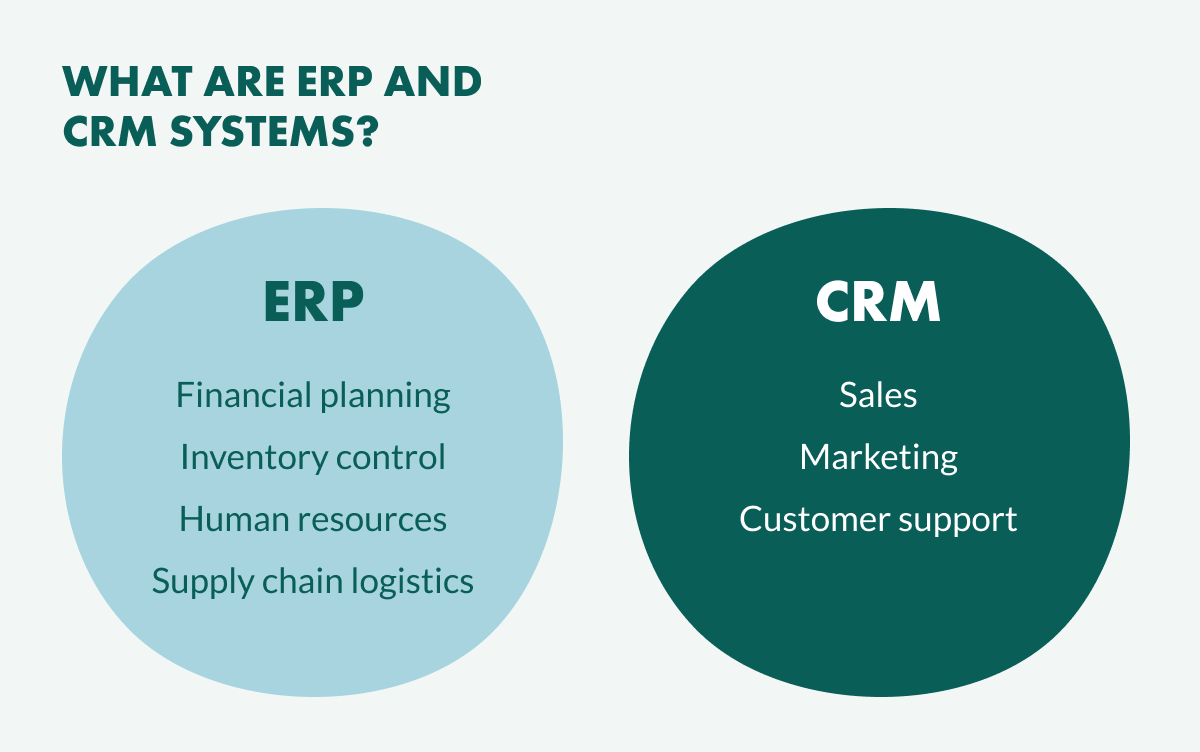In the digital age, businesses rely heavily on software systems to manage internal operations and customer relationships. Two of the most essential tools are Enterprise Resource Planning (ERP) systems and Customer Relationship Management (CRM) platforms. While each serves a unique purpose, integrating ERP and CRM creates a unified ecosystem that enhances data flow, increases efficiency, and drives informed decision-making. This synergy, known as ERP CRM integration, is becoming a strategic necessity for businesses aiming to stay competitive and agile.
What Is ERP CRM Integration?
ERP CRM integration is the process of connecting an organization’s ERP system—used for managing internal operations like inventory, accounting, and supply chain—with its CRM platform, which handles customer interactions, sales pipelines, and marketing activities. This integration enables the two systems to share data in real time, ensuring that information is accurate, consistent, and accessible across departments.
Rather than working in silos, teams can operate with a comprehensive, 360-degree view of the business and customer lifecycle.
Key Benefits of ERP CRM Integration
1. Improved Data Accuracy and Consistency
Integration eliminates redundant data entry, reducing the risk of errors and inconsistencies across systems. Customer, order, and inventory data stay synchronized, enabling reliable reporting and forecasting.
2. Streamlined Business Processes
When ERP and CRM systems work together, workflows—such as order fulfillment, invoicing, and customer follow-up—can be automated and executed faster, improving operational efficiency.
3. Enhanced Customer Experience
Sales and support teams can access real-time data about inventory levels, shipping updates, and order history, enabling them to provide timely and personalized service to customers.
4. Better Cross-Department Collaboration
Integration bridges the gap between sales, customer service, finance, and logistics teams, allowing smoother collaboration and faster decision-making.
5. Increased Visibility and Reporting
Managers can generate holistic reports that combine customer behavior with financial and operational performance, leading to more strategic business insights.
Use Case Examples
Sales Order Automation
When a salesperson enters an order in the CRM, the data is automatically sent to the ERP system for processing, inventory allocation, and invoicing—no manual handoff required.
Customer Account Updates
Changes made in a CRM contact record—such as a new address or updated contact info—are reflected instantly in the ERP system, keeping both platforms aligned.
Real-Time Inventory Access
CRM users can see current inventory levels from the ERP system when quoting or placing orders, reducing delays and backorders.
Common ERP and CRM Systems to Integrate
Popular ERP Platforms:
-
SAP
-
Oracle NetSuite
-
Microsoft Dynamics 365 Business Central
-
Odoo
-
Acumatica
Popular CRM Platforms:
-
Salesforce
-
HubSpot
-
Zoho CRM
-
Microsoft Dynamics 365 CRM
-
Pipedrive
Many vendors, like Microsoft Dynamics 365 and NetSuite, offer native ERP-CRM integration within the same ecosystem. However, businesses using separate systems often rely on third-party connectors or middleware for integration.
Integration Methods
1. Native Integration
Offered by vendors who provide both ERP and CRM modules. This is usually the easiest and most seamless option.
2. Middleware Platforms
Third-party tools like MuleSoft, Dell Boomi, Zapier, or Informatica act as intermediaries, syncing data between systems regardless of vendor.
3. Custom APIs
For complex or unique business needs, custom integrations using APIs allow precise control over which data flows between systems and how.
Challenges of ERP CRM Integration
-
Complexity: Integration can be technically demanding, especially if systems are not inherently compatible.
-
Cost: Custom development or middleware solutions can require a significant investment.
-
Data Mapping: Misalignment of data fields between CRM and ERP may cause syncing errors.
-
Security Risks: Improperly secured integrations may expose sensitive customer or financial data.
These challenges highlight the importance of careful planning, reliable technology partners, and robust testing during the integration process.
Best Practices for ERP CRM Integration
-
Define Clear Objectives – Know what you want to achieve: reduced duplication, better customer service, faster billing, etc.
-
Map Your Data – Ensure that CRM and ERP data fields match and that naming conventions are consistent.
-
Choose the Right Tools – Select integration platforms or APIs that align with your scalability, budget, and security needs.
-
Test Thoroughly – Conduct rigorous testing to ensure data flows correctly and securely between systems.
-
Train Your Team – Ensure that all users understand how to use the integrated system and how it benefits their workflow.
Conclusion
ERP CRM integration represents a powerful opportunity for businesses to break down silos, optimize operations, and deliver superior customer service. By connecting back-end systems with front-end engagement tools, companies can work smarter, respond faster, and operate with a unified view of both their operations and their customers.
In an increasingly data-driven world, integration isn’t just a convenience—it’s a competitive advantage.

